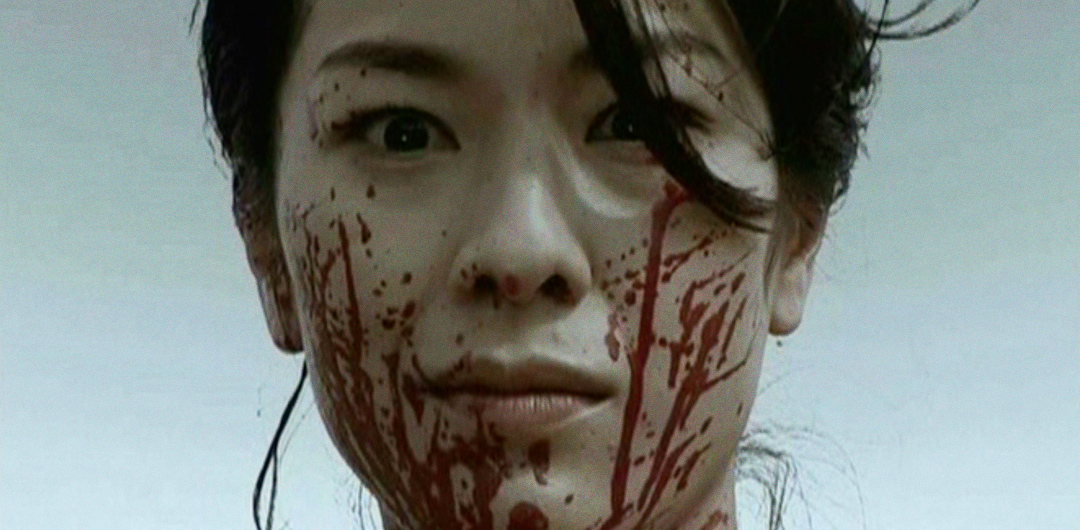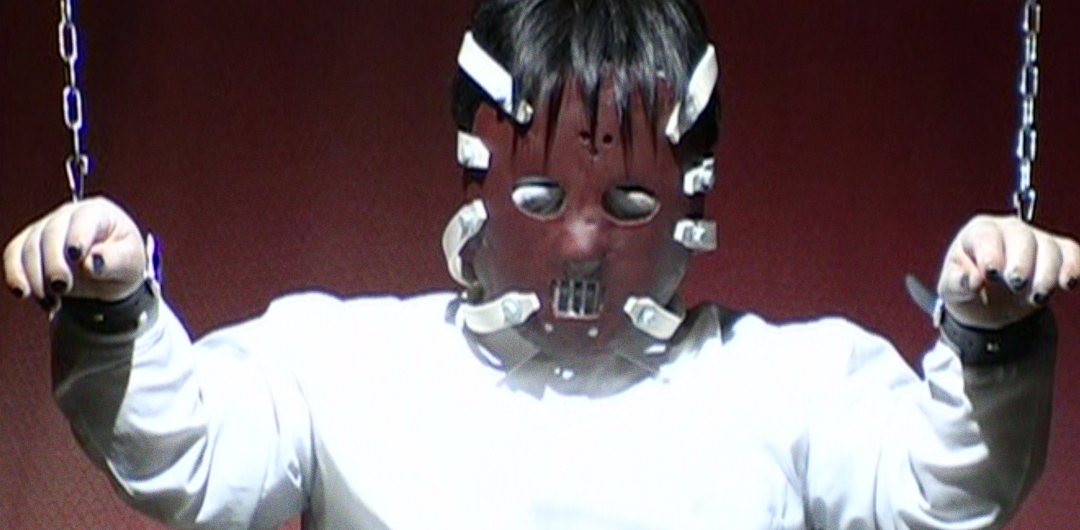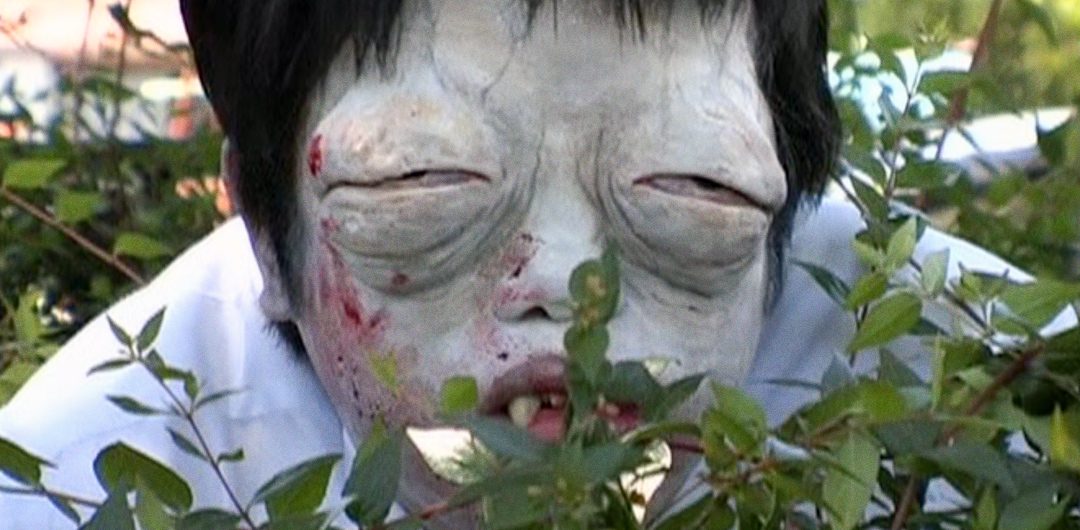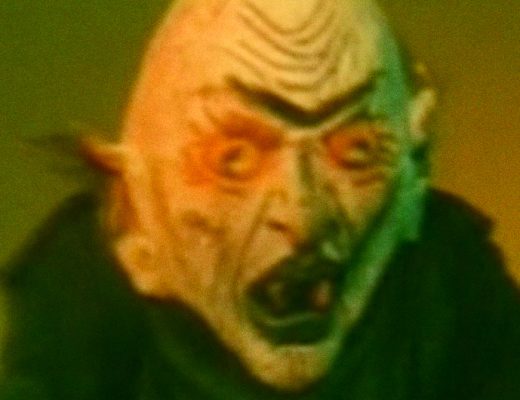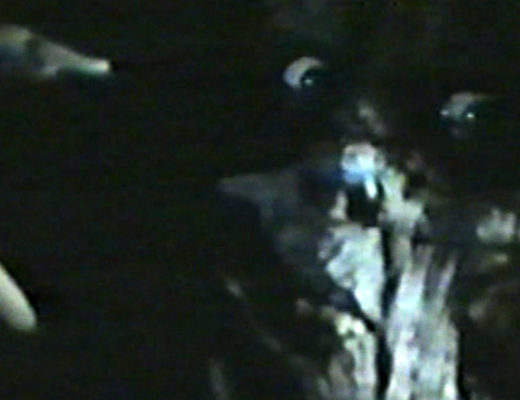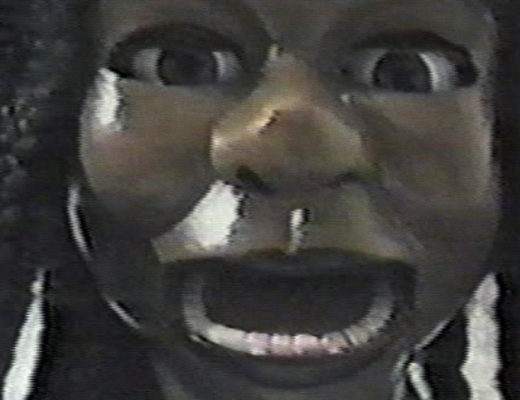Years ago, I figured out that I didn’t want children. There wasn’t a journey of self-exploration that led to this decision. I just woke up one day and knew that there would never be a reality where myself, a kid, and a Pink Flamingos DVD would coexist in the same household. At family gatherings, my uncle Larry asks, “When you gonna make Mom and Dad proud grandparents?” and I never have a good answer. But things are different now — I’ve seen The Boy From Hell. Next time, I’ll say: “Probably never because I don’t want to be in a situation where I have to sing ‘Happy Birthday’ to my undead son while he’s wearing a Hannibal Lector mask and chained to a wall.”
Setsu and her son Daio are having a shitty week. After Daio is beheaded and killed in a freak car accident, Setsu decides that she can’t live without him. So, as grieving parents often do, she joins forces with an old witch and uses a haunted fang to sacrifice children. Then she uses their brains to reanimate Daio. And it works! But there’s a catch — Daio is transformed into a mutated, cannibalistic beast who can only survive on the entrails of humans. Like Depeche Mode, it could be said that Daio “just can’t get enough.”
And neither can I.
For the last decade and change, Mari Asato has been modestly creating some of the most thoughtful and stylish Japanese horror movies of the 21st century. Ju-On: Black Ghost, Asato’s sequel to Ju-On: The Grudge, brought the franchise back to its chilly roots, favoring psychological depth over Fulci-style head explosions. And her Fatal Frame stands tall next to Resident Evil: Apocalypse as the most enjoyable video game adaptation on the planet. The Boy From Hell is Asato’s filmmaking debut. It’s a 50-minute, shot-on-video ripper that was the first of six manga adaptations in the Hideshi Hino’s Theater of Horror franchise. It’s also the only movie in the series that features a child getting cut in half with a chainsaw.
The Boy From Hell is unlike anything else in Asato’s filmography. Cheap, reckless, and fueled by comic book gore, the movie grafts a Universal horror template onto a public access soap opera. We end up with an unexpected voyage to a grotesque subconsciousness, one that’s just as electric as the manga that inspired it. Green screen inserts and animated transitions melt into beautifully composed shots of barren landscapes. The soundtrack photocopies Goblin’s electro-harpsichord soundtrack for Deep Red and puts it to good use during a bizarre tangent involving pigeons. The unhinged violence, histrionics (“One more brain transplant will save him!”), and lightning-fast pace all culminate in a literal trip to hell. It materializes as an acid-tinged, CGI nightmare zone that’s almost as shocking as the one in Spawn. But bubbling below the madness is a hint of what would define Asato’s work in the future — a sincere, emotional core.
Deep down, The Boy From Hell is about grief and the difficulty of moving on. There’s a quiet scene of Daio, hiding in the shadows, staring forlornly at a group of children playing soccer. He wants to join in and be a regular kid. But he knows that his disfigurement will scare them, as will his desire to eat their intestines. Despite the absurdity of the movie’s premise, we feel for Daio. It wasn’t his choice to be transformed into a demon killer, but his mother’s love caused it to happen. Asato is able to communicate these feelings while simultaneously delivering a scene where Daio punches through a guy’s chest. This is a testament to her skills, and another reason why it pays to seek out horror films made by women.
The Boy From Hell made me happy to be alive, just like every other movie I’ve seen with Mari Asato’s name on it. If I had 200 gazillion dollars, I’d give her at least half so that she could keep making movies indefinitely.
